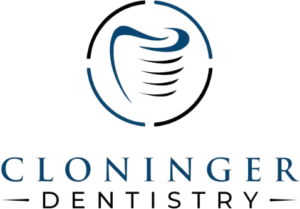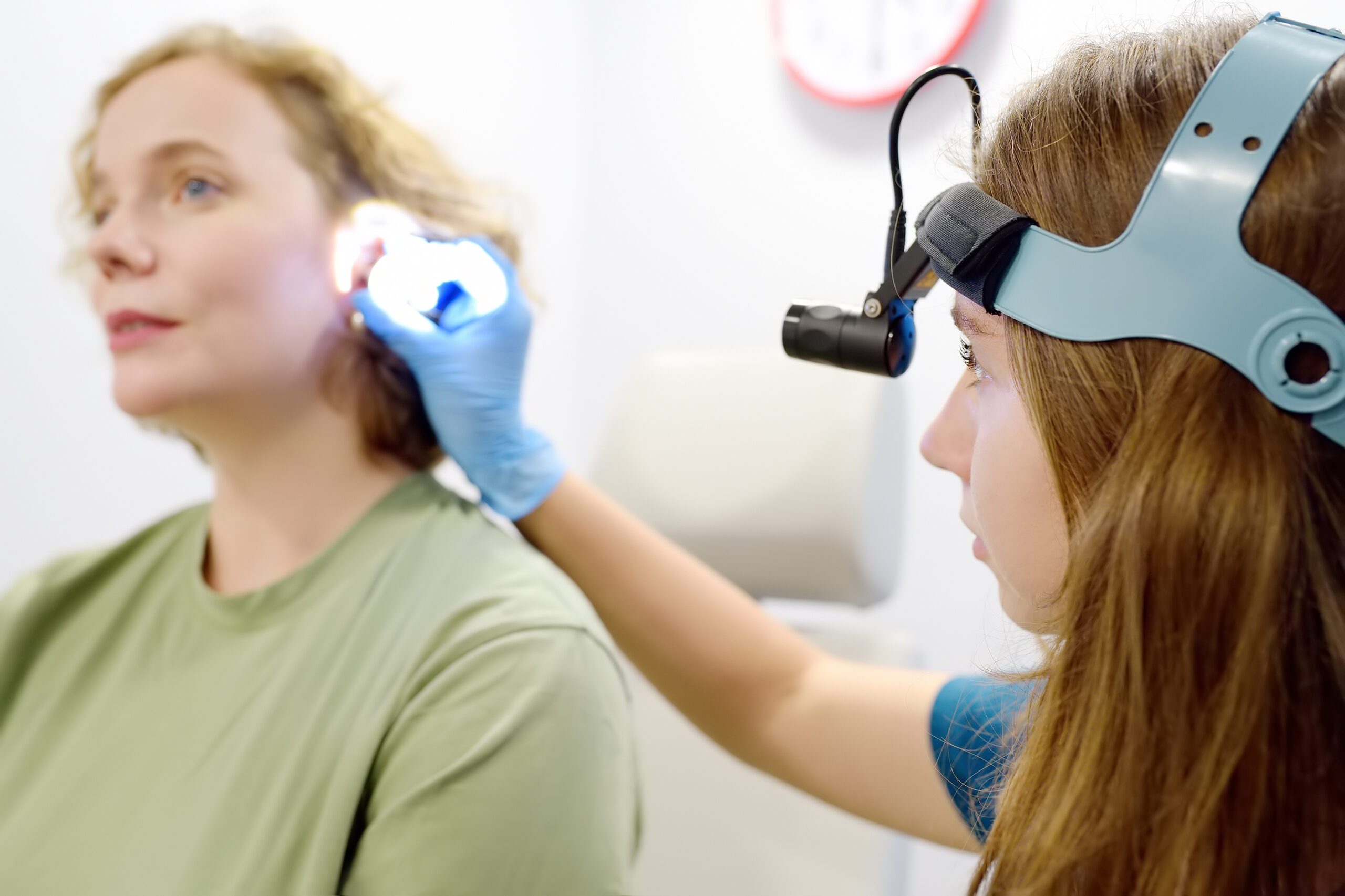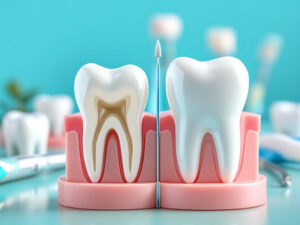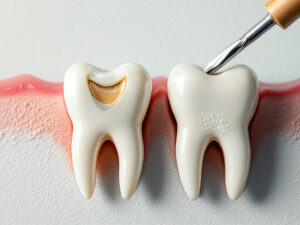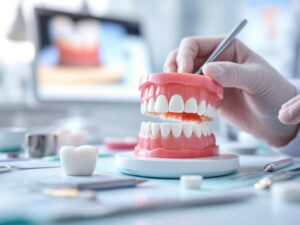Explore intraoral camera examination
If you are seeking a thorough, cutting-edge way to assess and improve your oral health, an intraoral camera examination can be an invaluable tool. By allowing you to see high-resolution images of your teeth and gums, this technology helps you better understand the state of your dental wellbeing. When you choose Cloninger Dentistry for your family’s dental care, you benefit from a supportive environment that prioritizes comfort, precise diagnosis, tailored treatment, and comprehensive care. This examination offers a clearer look at potential problem areas, aiding in faster, more effective care for everything from routine dental checkups to advanced cosmetic treatments.
In what follows, you will discover how an intraoral camera examination can transform your dental experience, why it might be especially helpful for you or a loved one, and how Cloninger Dentistry leverages this technology to provide the support necessary for lasting oral health. From preventive hygiene to cosmetic dentistry, we will discuss our individualized approach and show how this camera system adds layers of transparency and detail to modern diagnostics.
Understand how an intraoral camera works
An intraoral camera is a compact, pen-shaped device that features a high-resolution lens at the tip. This lens captures magnified images of the inside of your mouth, projecting them onto a monitor in real time. According to Brian Crosby Dentistry, this setup is especially beneficial because it offers a more detailed view than a simple mirror and light, enabling early detection of issues like micro-cavities, hairline fractures, or subtle signs of gum irritation.
You do not have to worry about an uncomfortable exam. Intraoral cameras typically measure just a few inches in length and are designed to fit naturally in your mouth, minimizing discomfort. By gently moving the camera around each tooth and gumline, your dentist can capture detailed images from multiple angles. This process is non-invasive, avoiding the common hassles of manual probing. For people with a strong gag reflex or smaller mouths, this can be a much more comfortable and less intimidating alternative to traditional tools.
Key components of the device
- High-resolution camera lens: Provides crisp, magnified images or video.
- Built-in light source: Illuminates the areas being photographed or recorded.
- Lightweight, ergonomic handle: Allows the dentist to navigate easily around the mouth.
- Real-time display compatibility: Transmits visuals instantly to a chair-side monitor.
This live visual feed allows your dental team to involve you in the evaluation process. You get to see exactly what they see, helping you better grasp diagnoses and treatment recommendations. Studies cited by Add Smiles Dentistry indicate that patient compliance often improves when they can visually connect with their oral issues.
Recognize unique benefits for your smile
To appreciate why an intraoral camera examination is a game changer, consider how precisely it can highlight subtle hazards in your mouth before they escalate. Early detection can mean the difference between a small filling and a more complex procedure. Here are some ways it can benefit you:
-
Earlier detection of dental problems
By capturing magnified images, your dentist can spot tiny flaws, such as hairline fractures, small cavities, or early gum disease. This early identification is crucial for timely interventions like gum disease treatment or a painless cavity filling. According to Altoona Smiles, addressing issues sooner helps prevent bigger problems down the road. -
Enhanced patient education
Instead of simply describing issues verbally, your dentist can show you real-time images. This visual context helps you grasp the severity of any condition, empowering you to make informed decisions about treatments, whether it is professional teeth cleaning or a more advanced procedure like root canal therapy. -
Higher treatment acceptance
Research from Add Smiles Dentistry shows an increased willingness among patients to proceed with recommended care after seeing images of their teeth. When you see the problem up-close, it feels more tangible, driving better understanding and motivation to correct the issue. -
Accurate documentation and monitoring
Images from intraoral cameras can be saved for future reference, enabling your dentist to track changes over time. During your routine visits, you and your dentist can compare older images to current ones to gauge improvement or progression, ensuring your treatment plan remains up-to-date. -
Comfort and convenience
Traditional methods that rely on mirrors can sometimes require wide mouth openings and awkward jaw angles. The slender shape of the intraoral camera reduces discomfort, and the process is less invasive. This ease may make you more inclined to schedule regular checkups like a new patient dental exam or a routine dental checkup.
By harnessing these benefits, Cloninger Dentistry offers the individualized plans you need for effective long-term well-being. And because these cameras are technologically advanced yet minimally intrusive, they can contribute greatly to a family’s comfort during pediatric dental care as well as adult treatments.
Compare intraoral cameras to traditional tools
While traditional dental exams rely on handheld mirrors and X-rays, the intraoral camera adds another layer of transparency and thoroughness. Below is a comparison table showing how an intraoral camera stacks up against more conventional approaches.
| Approach | Magnification | Patient Visibility | Invasiveness | Image Storage |
|---|---|---|---|---|
| Traditional mirrors | Minimal | Limited | Moderate | Not feasible |
| Traditional X-rays | Medium | Invisible to patient | Low | Stored digitally, but black-and-white |
| Intraoral cameras | High (30x or more) | Real-time color video | Low | High-resolution images saved digitally |
Why digital imaging alone is not enough
X-rays and digital scanning (including digital xray imaging and 3d imaging dental diagnostics) are immensely useful for looking beneath the surface of teeth and gums. However, they often do not convey details about the soft tissues or external surfaces. Although these scans detect deep structural problems such as impacted teeth or bone issues, they cannot always identify minor surface cracks or gum inflammation. The intraoral camera is uniquely suited for uncovering surface-level problems, capturing them in full color from multiple angles.
For a comprehensive view, dentists often combine these methods. For example, your dentist might use an X-ray to rule out bone damage and an intraoral camera to pinpoint enamel cracks. This multi-pronged approach is part of how you or a loved one can get access to the kind of thorough, supportive treatment you need for a strong and healthy smile.
See it in preventive dentistry
Regular prevention is the backbone of good oral health. An intraoral camera examination can reinforce preventive measures in several ways:
-
During professional teeth cleaning
This technology helps hygienists show you any tartar buildup or emerging gum irritation before it turns into a serious problem. Visualizing the difference between a healthy gumline and one affected by plaque is often the motivation people need to improve home care. -
Assessing gum disease treatment
For patients diagnosed with gingivitis or periodontitis, real-time images of inflamed pockets or receding gums can illustrate the urgency of treatment. Rechecking the same areas over time is a key part of periodontal maintenance cleaning, ensuring your gums are healing properly. -
Monitoring child development
If you have children, seeing the inside of their mouths up close during pediatric dental care can highlight habits that might lead to decay, such as poor brushing techniques or early signs of misalignment. -
Identifying subtle changes
A digital library of images allows your dentist to verify if any specific tooth has changed over six months or a year. This detailed record helps catch cavities before they enlarge, thereby minimizing invasive treatments like tooth extraction service. -
Incorporating educational moments
Your dental team can freeze any live image on the monitor, zoom in, and explain exactly what is happening. Showing you a small crack or plaque deposits up close can be far more effective than just describing them.
The ultimate goal is to equip you with the knowledge and confidence to care for your oral health proactively. By taking advantage of routine intraoral camera examinations, you ensure potential problems are spotted early, encouraging individualized plans that keep your smile bright and healthy.
Discover cosmetic applications
Your smile’s appearance matters, whether you want a subtle enhancement or a full makeover. An intraoral camera examination helps guide cosmetic dentistry discussions by giving you a complete look at color, shape, alignment, and overall tooth condition:
-
Assessing potential for veneers or crowns
Before a dentist recommends a porcelain crown service or dental crown placement, the camera images help both you and the dentist identify chipped edges, discoloration, and uneven surfaces. Pinpointing problem areas leads to personalized plans that improve functionality and aesthetics. -
Enhancing whitening treatments
If you are curious about bleaching or other whitening methods, an intraoral camera can reveal which teeth are most stained. You can track progress by comparing pre- and post-whitening images, ensuring targeted and satisfying results. -
Planning orthodontic solutions
For mild issues like spacing or crowding, high-resolution images can give an unobstructed view of alignment. This helps you decide if invisible aligners or more traditional options might be right for you, as well as identify any additional treatments needed. -
Highlighting small changes
Even subtle modifications like tooth reshaping or bonding can produce a notable transformation. It can be encouraging to see “before” and “after” comparisons in sharp detail, spurring your commitment to maintaining those improvements long term.
Modern dental practices like Cloninger Dentistry utilize intraoral cameras for cosmetic consultations, combining visual data with your goals and preferences. This comprehensive care approach aligns with our mission to offer the support necessary for lasting oral health and confidence in your appearance.
Embrace the Cloninger Dentistry approach
If you or a loved one want leadership in family dental care, prevention, and cosmetically oriented procedures, Cloninger Dentistry strives to stand out. We incorporate intraoral cameras within a framework of:
- Tailored treatment programs: Every mouth is different. By examining high-resolution images, we build individualized care plans that address your priorities, whether you are in need of toothache pain relief, a dental crown placement, or a private dental consultation.
- Comprehensive care: Our services range from fluoride treatment and tooth sensitivity treatment to more elaborate procedures like full denture fabrication or emergency dental care. With clarity from intraoral footage, we can handle simple or complex issues efficiently.
- Supportive environment: Your comfort and peace of mind are paramount. By giving you a front-row seat to your own oral health, we reduce anxiety and promote shared decision-making.
- Preventive priorities: A major feature of our practice is focusing on prevention through regular checkups, professional teeth cleaning, and educational guidance. The intraoral camera is a powerful tool in illustrating how lifestyle and hygiene impact your teeth and gums.
- Transparent communication: We value openness about costs, timelines, and potential outcomes. Our transparent dental pricing and written treatment estimate policies eliminate after-the-fact surprises. Plus, if coverage or budget concerns exist, our flexible financing dental options can help provide a plan that works for you.
By combining empathy, modern technology, and individualized plans, our aim is to expose you or your loved one to a higher standard of dental care. We invite you to explore our approach in person, whether you need an immediate checkup or want to schedule a same day dental appointment.
Learn how it aids restorative procedures
While an intraoral camera examination is an excellent preventive and diagnostic tool, it also enhances restorative dentistry by:
-
Refining fillings
When placing a painless cavity filling, clarity regarding the size and shape of your cavity ensures that only the decayed portion of a tooth is removed, conserving more natural structure. -
Guiding root canal therapy
When diagnosing infection severity, an intraoral camera can zero in on subtle changes to gum color or tooth surface. While root canal therapy still relies on internal imaging to examine pulp and nerve tissues, the camera aids in determining the best course of action before drilling. -
Ensuring crown alignment
If your dentist is working on a dental crown placement or a porcelain crown service, subtle alignment issues can threaten the long-term success of the procedure. Detailed camera footage helps ensure an ideal fit, avoiding complications like uneven bite or discomfort. -
Helping with implants or dentures
For advanced tooth replacements like snap in denture service, partial denture service, or full denture fabrication, the intraoral camera’s images can verify gum health, tissue shape, and potential areas of concern. This level of detail supports an optimal foundation for your dental appliance. -
Minimizing post-procedure complications
Immediately after a procedure, a quick camera scan can confirm there are no loose edges, exposed nerves, or untreated surfaces. This step can prevent follow-up trips by catching incomplete spots early.
Through each restorative treatment, intraoral camera technology helps confirm that the work being done aligns precisely with your unique dental needs.
Discover patient-friendly advantages
Patients often appreciate how an intraoral camera examination personalizes their time in the dental chair. Rather than simply being told about a hidden cavity, you see it yourself. This transparency can reduce confusion, build trust, and even ease dental anxiety for people who worry about unknown or “worst case” issues. According to Affinity Dental Chicago, the pen-sized camera is less likely to tire your jaw than older methods and often is well-tolerated by children and seniors alike.
When you are better informed, you can take genuine ownership of your oral health. Working hand in hand with your dentist, you decide on next steps, from scheduling your written treatment estimate to finalizing a private dental consultation. Knowledgeable and engaged patients tend to be more successful in long-term dental health, often staying on track with recommended home-care routines and follow-up visits.
Adopt a practical perspective for families
Families can particularly benefit from the thorough perspective an intraoral camera offers. If you have ever tried to convince a child or teen about the importance of proper brushing, you know how tough it can be. By seeing an actual, magnified image of plaque buildup, children often become more motivated to adopt consistent hygiene habits. If you are a parent, you can use these images to track how your child’s oral care is progressing. This can be a game changer when it comes to preventing unnecessary cavities or gum issues that might otherwise require extensive treatments, such as a simple tooth extraction.
For older adults or anyone managing multiple health conditions, the camera’s clarity can be equally comforting. Caregivers can follow along and be part of the discussions about more complex interventions (e.g., combined procedures like a surgical tooth extraction followed by a dental bridge placement). By staying informed, families are in a better position to choose the right path for their loved ones.
Incorporate it into your routine checkup
You might wonder if every routine visit includes an intraoral camera examination by default. While not every dentist automatically offers it, at Cloninger Dentistry, we believe in its value for spotting subtle changes and educating our patients. When you come in for your routine dental checkup or new patient dental exam, just ask us about using the camera. We will be glad to show you how it might add clarity to your diagnostic process.
During a typical session, you can expect:
- A quick sterilization of the device before use.
- A short demonstration to explain what you will see on the screen.
- A non-invasive scan of each tooth and the surrounding gumline.
- A discussion of any visible concerns, such as broken fillings, tiny cavities, or signs of gingival recession.
- A recommendation for next steps, whether that involves tooth sensitivity treatment, upgrading old fillings, or focusing on improved at-home care.
By integrating the camera’s images into your exam, your questions and concerns can be addressed more quickly and precisely. This is part of our emphasis on building trust and rapport with our patients.
Gain confidence in emergency situations
If you ever face a dental crisis, such as a sudden infection or knocked-out tooth, high-quality visuals become even more significant. During moments like a dental infection treatment or knocked out tooth treatment, swift, accurate assessments can shape a better outcome.
- Immediate clarity: An intraoral camera provides closeup visuals that help your dentist see the extent of trauma or infection.
- Reduced anxiety: As soon as you see the exact issue yourself, you feel more informed about the complexity and potential solution.
- Efficiency in care: If you require a broken tooth repair or emergency oral surgery, real-time images speed up the decision-making process, ensuring no delays while your dental team prepares the appropriate treatment.
Thus, in emergency scenarios, the camera adds efficiency and specificity to procedures that could otherwise feel rushed or uncertain. It reinforces the supportive environment we strive to maintain at Cloninger Dentistry.
Explore answers to 5 common questions
Below are five frequently asked questions about intraoral camera examinations and how they can support you at Cloninger Dentistry:
-
Does the camera cause any discomfort?
The camera is about the size of a pen, and it is moved gently around your mouth. Most patients barely notice any discomfort. If you have a strong gag reflex, let us know so we can adjust our approach accordingly. -
How do I benefit from seeing my teeth on a screen?
When you watch a live feed of your teeth and gums, you gain immediate visual confirmation of issues, such as tiny cracks or early signs of gum inflammation. This understanding often leads to better decisions and stronger commitment to recommended treatments. -
Is the camera used for kids too?
Absolutely. Many parents find that seeing plaque or cavities magnified on the screen motivates their children to take brushing and flossing more seriously. It is also less intimidating than larger dental instruments, making it child-friendly. -
Do I still need X-rays if I have an intraoral camera exam?
Yes, typically you do. The intraoral camera is excellent at capturing surface-level details, while digital xray imaging reveals hidden problems, such as root damage or bone abnormalities. Combined, they form a more complete picture of your oral health. -
How frequently should I request an intraoral camera examination?
Many people benefit from at least one such scan per year or whenever a concern arises. During routine checkups, you can ask your dentist whether conducting an intraoral camera scan might be beneficial for identifying new developments.
Choose Cloninger Dentistry for modern care
When you or a loved one need family dental services, from preventive hygiene to transformative cosmetic upgrades, choosing a practice that employs modern diagnostic technology can make a significant difference. Intraoral camera examinations let you see what your dentist sees, building transparency, trust, and a sense of collaboration around your treatment plan.
Cloninger Dentistry combines empathetic care with advanced technology, creating an environment where you feel understood and prioritized. Whether you are stopping in for a quick fluoride treatment or planning a more complex procedure like a custom denture fitting, we incorporate high-quality visuals at every stage to ensure you receive well-rounded, comprehensive care. We also streamline cost considerations by offering insurance friendly dental practice options for families looking to minimize out-of-pocket expenses.
Move forward with confidence
An intraoral camera examination can transform your dental experience, giving you insight into every stage of your care process. By clearly identifying issues early and sharing control of your oral health journey, you remain confident and engaged. Ultimately, that sense of ownership can encourage lasting changes in hygiene habits and keep your smile bright long into the future.
When you are ready to learn more about how this innovative technology fits into your preventive or cosmetic plan, contact Cloninger Dentistry. Our commitment to personalized, comprehensive care ensures that every member of your family receives the support necessary for a healthy, confident smile. Schedule your next appointment or private dental consultation today, and experience the difference that an intraoral camera can make for you or a loved one.
